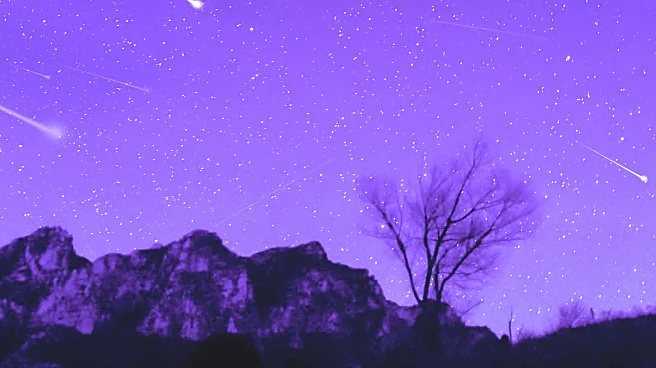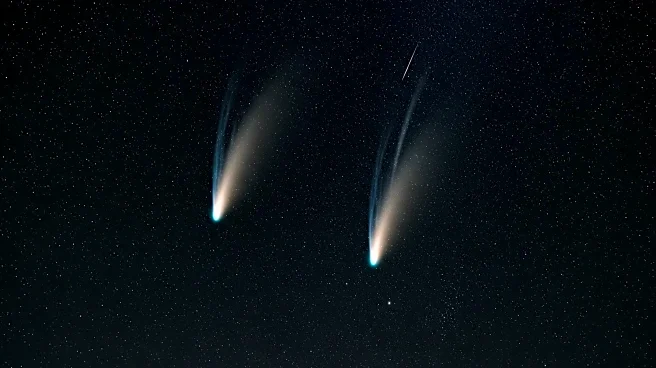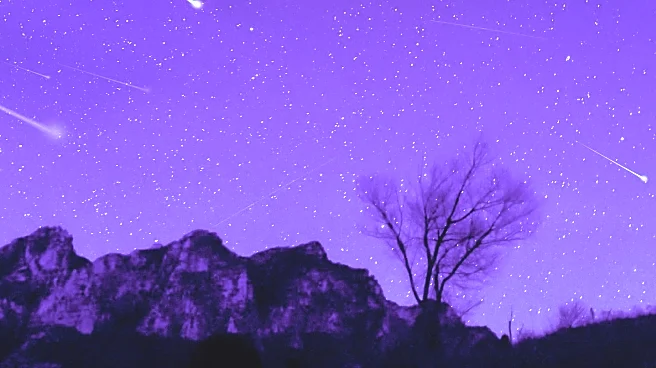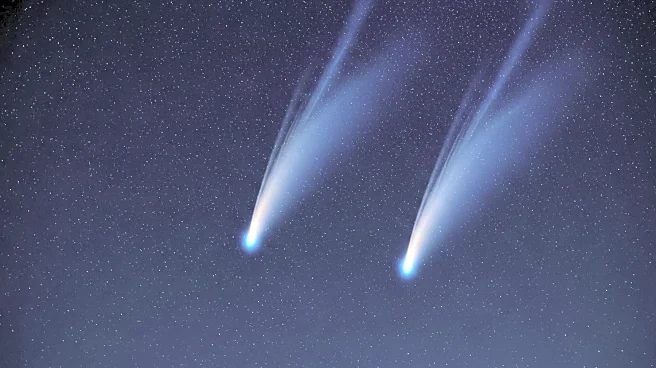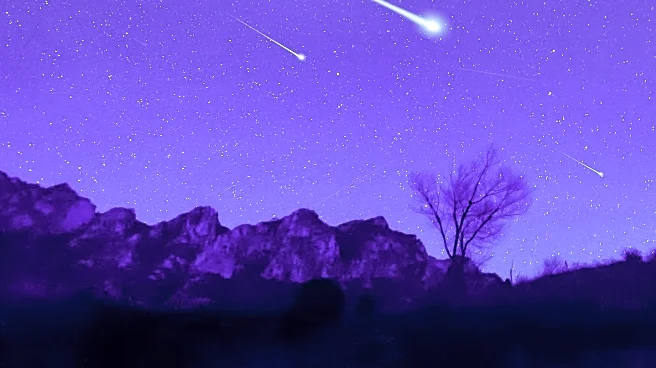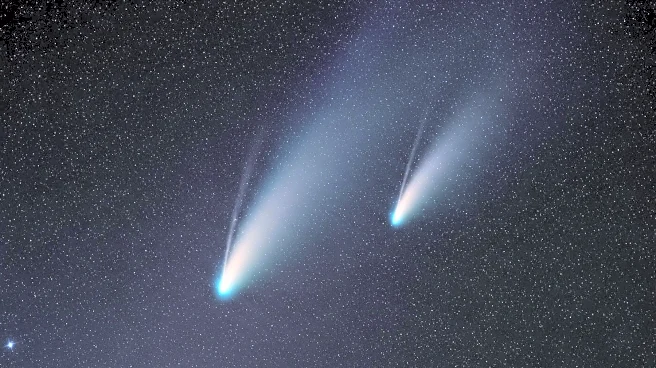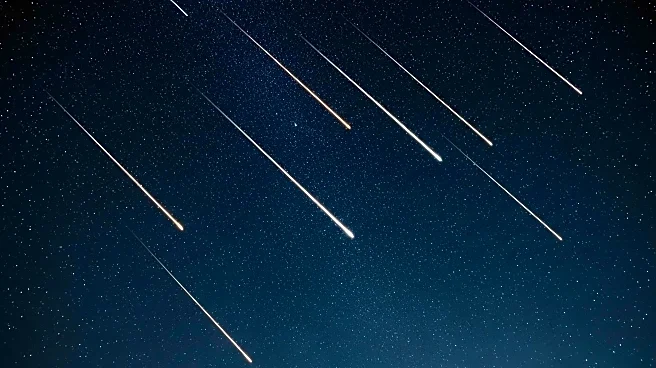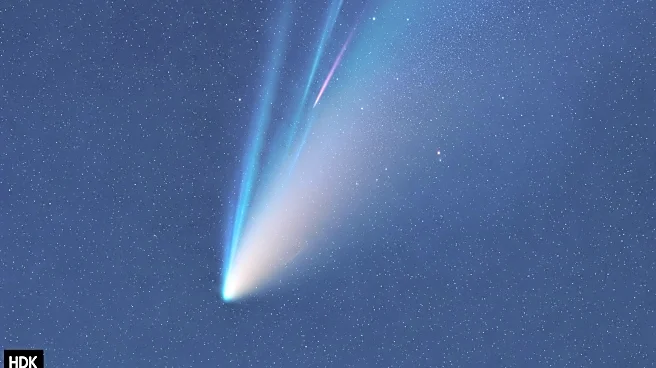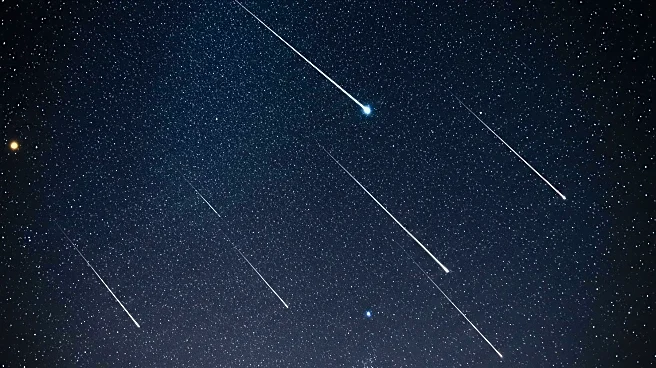What's Happening?
The Orionid meteor shower, an annual celestial event, is currently visible across the United States. This meteor shower occurs when Earth passes through debris left by Halley’s Comet, which last appeared in 1986. According to NASA, the Orionid meteors are known for their brightness and speed, with trails that can last from seconds to minutes. The peak of this event is expected to be particularly luminous due to the moon's phase, which will darken the sky on October 21, 2025. The meteors appear to originate from the constellation Orion, and the best viewing conditions are in the Northern Hemisphere, where the crisp fall air enhances visibility. The shower is active from October 2 to November 12, with the peak occurring between October 20 and 21, offering up to 20 to 30 meteors per hour under ideal conditions.
Why It's Important?
The Orionid meteor shower is significant for both amateur and professional astronomers, as well as the general public, providing a unique opportunity to observe a natural phenomenon. The event draws attention to the importance of dark sky areas, which are crucial for optimal viewing conditions. This year, the U.S. offers some of the best locations for viewing, including national parks with minimal light pollution. The meteor shower also serves as an educational moment, highlighting the ongoing interaction between Earth and cosmic debris. Additionally, the appearance of Comet Lemmon, which will not be visible again until 3421, adds to the event's rarity and appeal.
What's Next?
Viewers are encouraged to find dark sky locations to maximize their experience of the meteor shower. The event is expected to continue until November 12, providing multiple opportunities for observation. As the peak approaches, interest from the public and media is likely to increase, potentially leading to organized viewing events and educational programs. The visibility of Comet Lemmon during the same period may also attract additional attention from the scientific community and the public.

